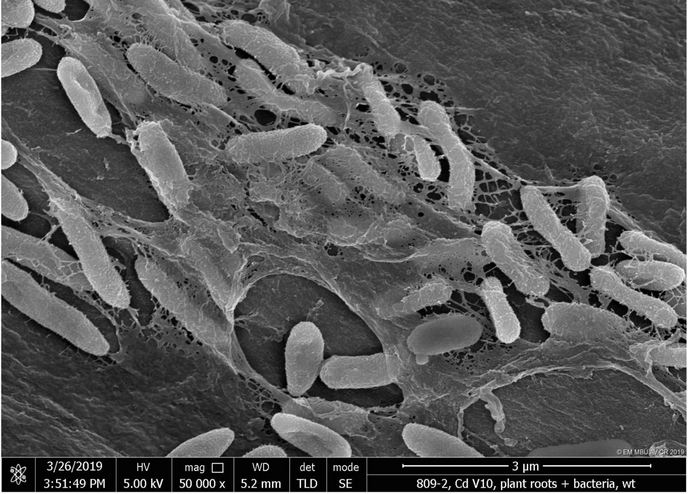Bacteria as crop biofertilisers
In agriculture, PGP bacteria constitute a promising and environmentally friendly approach to increasing crop yield. However, despite their great potential in lab conditions, implementation in natural soils has failed to produce the expected results probably due to an inability to adapt to new conditions or due to competition with soil native bacterial populations.
A transcriptome approach to biofertiliser development
To address this issue, the EU-funded BIOFERTICELLULASER project invested in increasing knowledge of the molecular interactions between plants and PGP bacteria. “Our goal was to understand the factors that drive bacterial plant growth promotion and stress-resistance induction,” explains project coordinator Pedro F. Mateos. Researchers employed the rapeseed plant Brassica napus that is extensively utilised as a source of food for humans, for feed for animals and as a bioenergetic plant. They selected PGP bacterial strains capable of surviving as endophytes inside the roots, escaping the impact of adverse external environmental conditions and increasing their chance of survival when applied to the fields. In particular, they tested their in vitro mechanisms to promote plant growth such as sodium and potassium solubilisation and production of siderophores and phytohormones. Scientists selected the best bacterial endophytes and analysed their genome sequence. They annotated their genomes and explored the bacterial genetic machinery that potentially interacts with the plant to promote its development. Following evaluation in the field, they selected one PGP bacterial strain that offered significant plant growth improvement under stress conditions as well as protection against one of the most important rapeseed fungal pathogens, Leptosphaeria maculans. This particular PGP bacterial strain underwent transcriptomic analysis when inoculated over the rapeseed plant roots. This led to the identification of a gene implicated in the synthesis of a bacterial metabolite that improves plant growth and resistance to biotic and abiotic stresses. To further elucidate its function, scientists deleted the gene and assessed the effect on normal and saline stress conditions, greenhouse assays and pathogen resistance.
The impact of PGP bacteria as biofertilisers
Chemical fertilisers used heavily in agriculture impose a significant environmental cost as they contaminate water and soils, consume lots of natural resources and emit nitrogen oxide gases with a greenhouse effect 300 times higher than CO2. There is an overall consensus towards ecologically friendly fertilisers that can improve crop production and help reduce the use of dangerous chemical fertilisers. BIOFERTICELLULASER selected PGP bacterial strains as biofertilisers based on their ability to enter the plant where they have fewer competitors and are protected from abiotic stresses. Ongoing work towards the identification of other bacterial genes implicated in the interaction with the plant will help elucidate the mechanisms for tolerating adverse conditions. This will aid not only the design of novel and better biofertilisers but also the selection of plant cultivars with a better capability to tolerate stress conditions. In view of the future, Mateos is confident that “the great potential of the bacterial strain we have isolated is worth exploiting further.″ Researchers are currently exploring the possibilities of a material transfer agreement with biofertiliser companies or a patent application by securing additional funding.
Keywords
BIOFERTICELLULASER, bacteria, stress conditions, biofertiliser, crop yield, endophyte, plant growth-promoting, transcriptomic analysis

